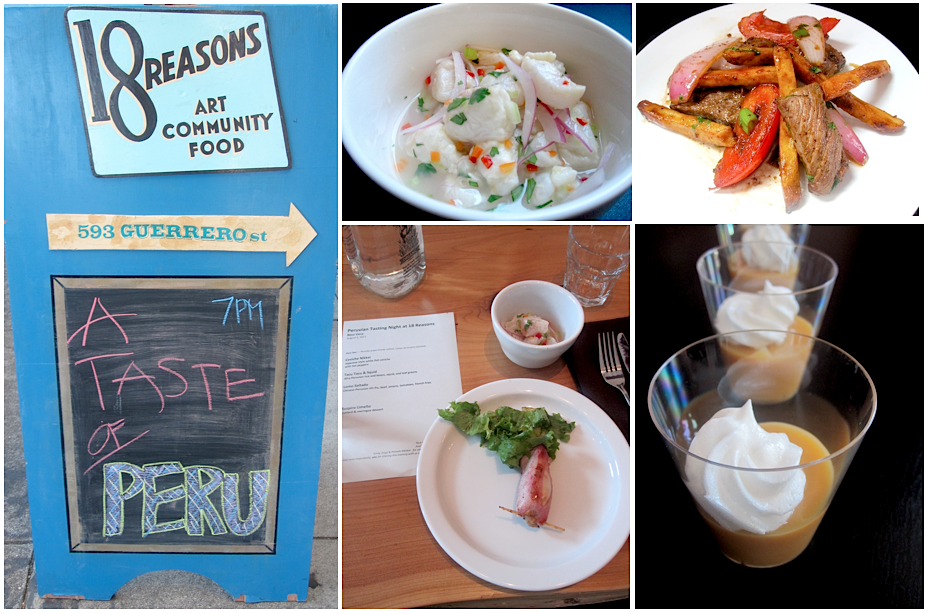5 years ago today, on August 2, 2011, I cooked the first ever Peruvian dinner at 18 Reasons. And since then, I’ve had the honor of becoming a regular guest chef and teacher there, bringing 24 pop-up dinners and cooking classes to a community eager to be taken on a gastronomical tour of Peruvian cuisine. Recently, I was asked by 18 Reasons to share my Tiradito Nikkei recipe for their volunteer newsletter, and to answer some questions about what drew me to 18 Reasons. I am happy to share that interview with you in this post. Thank you 18 Reasons for 5 wonderful years, I look forward to the next 5 years of sharing Peruvian cuisine with your community — cheers!
How did you get involved with 18 Reasons?
Over 5 years ago, 18 Reasons was a small studio space on Guerrero St., where I enjoyed attending many of their events — from dinners and coffee cuppings, to wine tastings and art shows, there was something exciting happening every night of the week.
One evening, while talking to the director after an event I attended, I made an inspired suggestion — “You should have a Peruvian pop-up dinner at 18 Reasons!” And after some planning and spirited conversation, on August 2, 2011, I cooked the first Peruvian dinner at 18 Reasons.
What in particular drew you to 18 Reasons?
In a word — community. I loved that the small space on Guerrero St. overflowed with people coming together to celebrate food culture in San Francisco. Now, in the new, larger, and more modern space on 18th Street, the tradition of building community continues.
Today, I am proud to say that I am a regular chef and teacher at 18 Reasons. With Peruvian dinners and cooking classes on the calendar once or twice a month, I work with 18 Reasons staff and volunteers to create the type of culinary and cultural events that attracted me to 18 Reasons in the first place.
What’s a challenge you’ve taken on lately in the kitchen?
I always enjoy learning new techniques and recently I’ve been cooking and making Pisco infusions with a sous vide machine. For Pisco in particular, making an infusion is a slow process, and it can take days or weeks for the flavors to be transferred from a spice or herb to the Pisco. But with the sous vide controlled temperature process, it’s only a matter of an hour or two. And that allows me to be creative and experiment more with the ingredients that I use to make Pisco cocktails.
What’s your spirit fruit or veggie and why?
There are many important ingredients in Peruvian cuisine that speak to my culinary spirit — potatoes, corn, quinoa, and tomatoes are native to Peru, while onions, limes, ginger, and soy sauce were brought to Peru by immigrants. But if I had to choose just two spiritual ingredients, then I would have to choose grapes and hot peppers from Peru.
In specific, grapes that are used to make wine in the Ica Valley of Peru, and the wine that is then distilled into Pisco, the oldest Spirit of the Americas. These grapes and Pisco have a long and beautiful history spanning centuries, making Pisco a very strong part of my cultural identity. That’s one reason why my blog is called “Pisco Trail.”
Peruvian hot peppers such as aji amarillo are the heart of Peruvian cuisine. While many Peruvian dishes are a fusion of Inca, Spanish, African, Chinese, and Japanese cultures — the most important ingredient is always the Peruvian aji. When I make the sofrito for a stew and add the aji, the aroma is unmistakable — spicy, smoky, earthy, and with a lingering heat, the aji is what gives Peruvian cuisine its soul.
